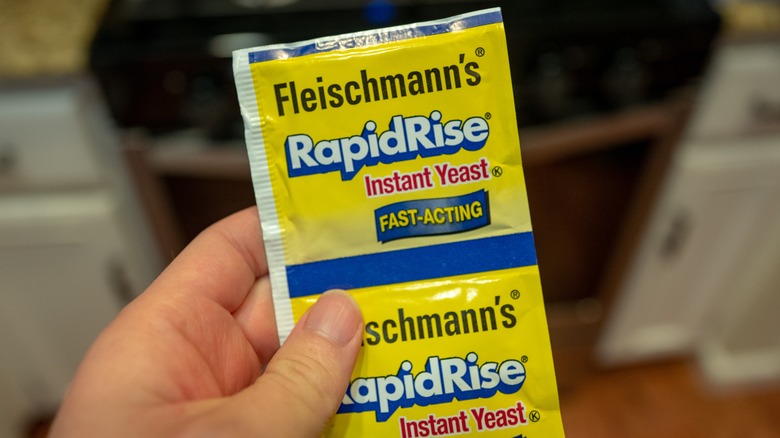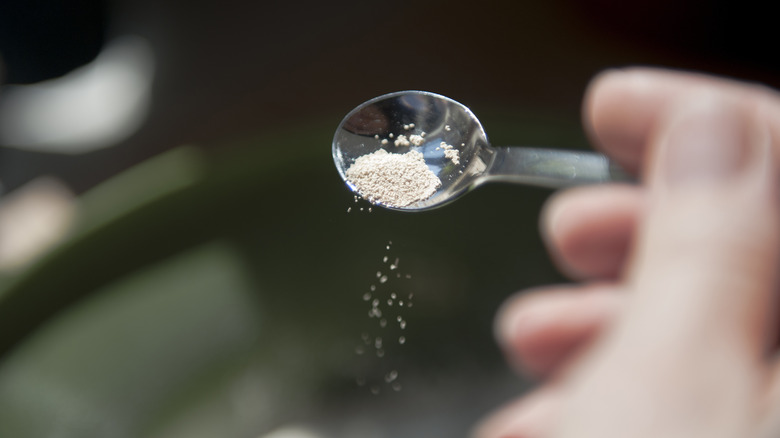How Much Yeast You Can Expect To Find Inside A Single Packet
Baking from scratch can be a daunting task. It's an exact science, with recipes requiring precise measurements of each ingredient. Sometimes, however, recipes can be vague, leaving the home baker to their own devices. For example, if you've ever followed a recipe for homemade bread, you've likely stumbled across an instruction to add one packet of yeast. But how much yeast does this actually entail?
In the United States, a standard packet contains 2 ¼ teaspoons of yeast by volume, which is equal to ¼ ounce, or 7 grams. This amount is consistent for almost all major brands of yeast found at the supermarket. If you're a frequent bread baker, you can also purchase yeast in 4-ounce jars, equivalent to 16 packets.
Understanding the amount of yeast in a single packet is vital to ensure that your baked goods have the best possible rise. Too little yeast will result in a flatter, denser bread that's hard to chew, whereas too much yeast will result in large, uneven air bubbles throughout your bread and an overly airy texture. Most modern recipes requiring yeast are based on the standard packet size for maximum user-friendliness. One packet of yeast is enough to raise approximately 4 cups of flour, but the exact ratio of flour to yeast will depend on your recipe.
How to activate yeast for baking
When baking bread, the most common types of yeast you'll find are instant and active dry. If you're using active dry yeast, it will need to be activated before it's added to a recipe. Before starting the activation process, make sure your yeast hasn't passed its expiration date, as older yeast is less likely to properly rise. For an easy trick to test yeast, add 1 tablespoon of warm water to a bowl and soak your yeast for approximately. Yeast is incredibly sensitive to temperature shock, as it comprises billions of living organisms. The correct temperature needed to activate yeast is approximately 110 degrees Fahrenheit, as temperatures over 140 degrees Fahrenheit are likely to overheat and kill your yeast, resulting in a disappointing rise in the oven.
When using instant yeast, you won't need to activate it beforehand. Instead, you can add it directly to your dry ingredients. You should be storing your yeast in an airtight glass or acrylic container and place it in the fridge or freezer. Unopened yeast should also be stored in the fridge or freezer, as the cold temperatures prolong the yeast's life span. If properly stored, expect your yeast to have a shelf life of four months in the fridge and six months in the freezer.

